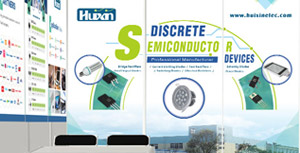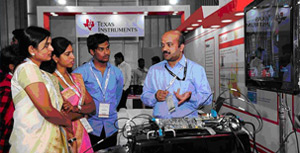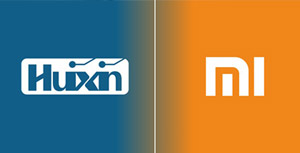HuiXin Electronic2017/5/9 16:40:26
Ten Pieces of Information about Diodes You Need to Know
Diode, also known as crystal diode or vacuum diode, is an electronic device that allows electricity to flow in one direction only. This two-terminals gadget is often used in rectifier. Today, Huixin will answer 10 questions about diode.
1. What is forward rated current in diode
The rated current is the main nominal value of diode, for example, the rated current of a 5A/100V diode is 5A. Normally speaking, the definition of rated current is the rated average current that a diode can take. Some test premise is with rectangular wave current which means that the average rectangular wave current that can flow in a diode would be 5A. The other premise is direct current and that indicates 5A direct current is acceptable. Take silicon diode as an example, larger direct current can flow in a diode if it is tested with rectangular wave current because compared with direct current, the same amount of rectangular wave current would bring more harm to a diode. Then can 5A current definitely flow in a 5A diode? Not exactly. It has things to do with the temperature. If the radiating conditions are poor, the current that pass in a diode would be restricted by junction temperature.
2. What is reverse rated voltage in diode
When there is a reverse blocking voltage, the maximum reverse voltage that a diode can bear is called rated voltage. The rated voltage of a 5A/100V is 100V. Although all manufacturers would allow 110V to be used in a 100V diode, it is not advised to do that. Once the rating is outnumbered, the reliability of products can not be guaranteed. Besides, many companies would choose to reduce the rating in order to ensure the reliability.
3. What is forward impulse current in diode
Booting a piece of machine or other transient situation requires diodes to take massive impulse current without being damaged, and this type of impulse current should not be repeated or long-interval. There is often a definition of such impulse current in a diode manual. The testing condition could be the impulse current of a single wave patter, either single sinusoidal wave or rectangular wave. Their current rating could reach to several hundred units.
4. What is forward conduction voltage drop in a diode
Voltage drop would appear when diodes are forwardly conducting with current flowing by. Voltage drop is related to direct current and temperature. In a silicon diode, the larger the current, the larger the voltage drop would be; the higher the temperature, the smaller the voltage drop would become. However, silicon carbide has larger voltage drop with higher temperature.
5. What is reverse leakage current in diode
The reverse blocking voltage is not usually ideal. Some small amount of current would leak from cathode to anode while the diode is taking reverse voltage. The larger the reverse voltage, the larger leaking current is, the higher the temperature, the larger leaking current could be. A large number of leaking current would bring big damage to the diode, especially in high voltage places.
6. What is reverse recovery time and reverse recovery current in diode
Recovery time is an important standard of diode. The so-called fast recovery and slow recovery are based on it. Changing from forward bias to reverse bias, there would be a great deal of reverse recovery current flow from cathode to anode. The reverse current firstly reach to its peak value then drop to zero. The time between reaching and drop is called reverse recovery time and the peak value current is reverse recovery current. That would bring much loss to diode if frequently applied. Reverse recovery time is relevant to the dropping speed of forward current. To guaranteeing the stability of electronic devices, it is suggested to use diode with shorter recovery time or to shut down the diode by ZCS.
7. What is soft recovery diode
When in reverse recovery, the kind of diode that drops slowly the reverse current is named soft recovery diode. Soft recovery is beneficial to small EMI.
8. What is junction capacitance in diode
Junction capacitance is a parasitic parameter of diode. It can be seen as paralleling electric capacity.
9. What is parasitic inductance in diode
parasitic inductance in diode is mainly caused by leading wires. It can be regarded as inductance in series circuit.
10. What is the transient process in forward conduction like in diode
Speaking of transient process of diode, the reverse recovery feature attracts more attention. As a matter of fact, people need to focus on the following points while diode is changing from reverse bias to forward conduction. When a diode is just conducted, the forward voltage drop would climb to its maximum and then drop to a stable value. This maximum would further increase with the raise of di/dt. That is to say, the moment of diode conduction would bring forward peak voltage to light and the voltage is larger than the steady voltage. Forward peak voltage of fast recovery diode is far lesser than the slow recovery diode.
Answers to question about diode stops here. For more detailed information please refer to Huxin’s website www.huixinelec.com















